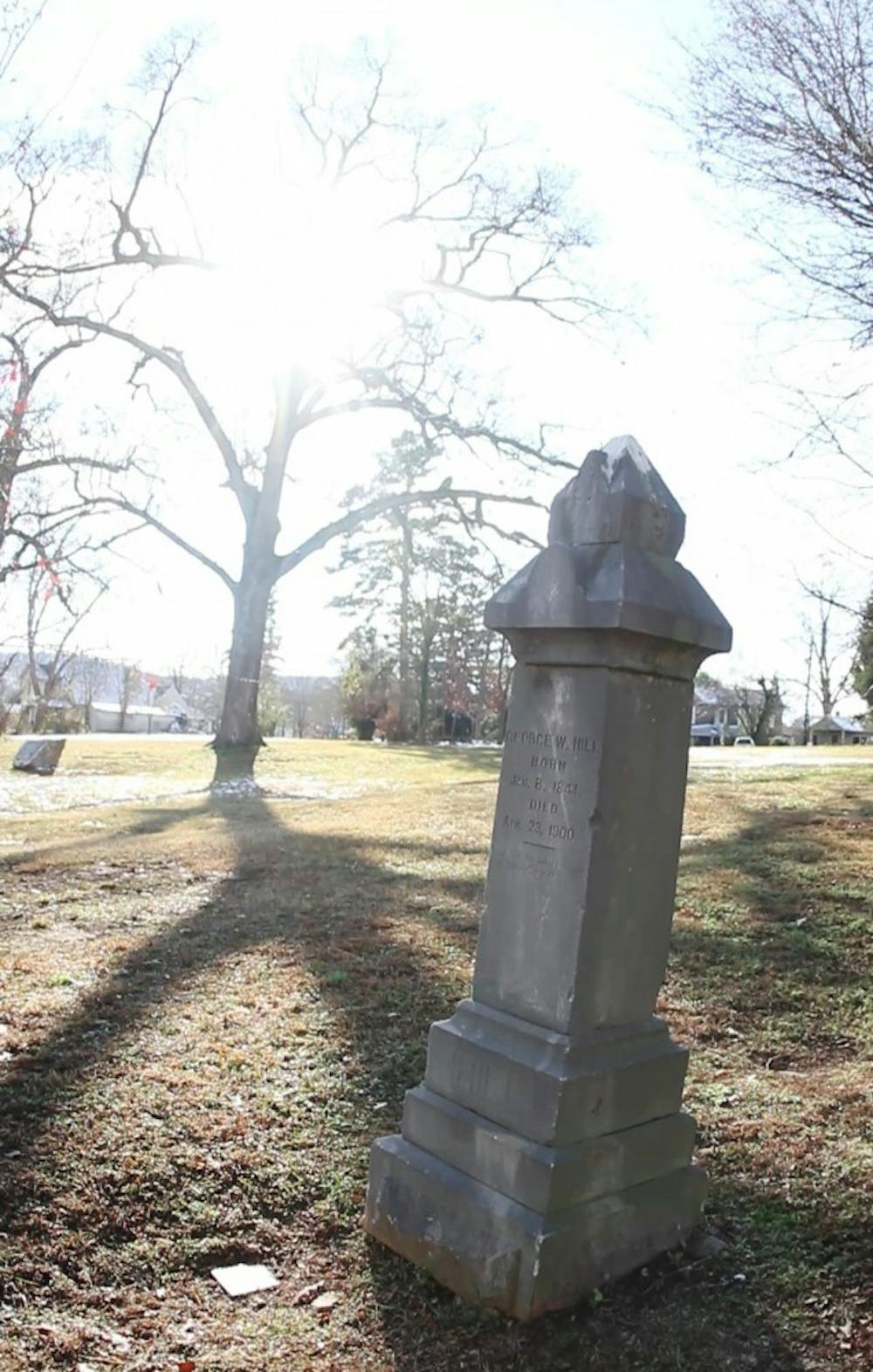Orange County Judge Beverly Scarlett didn’t know about the old slave cemetery growing up because blacks didn’t visit that part of Hillsborough.
But Saturday she watched with her mother and daughter as their ancestor’s grave marker and two others were memorialized in a brick monument at the cemetery.
About 50 people attended the ceremony, which included a speech from Mayor Tom Stevens, a brief sermon, the Lord’s Prayer and a hymn. Afterward, the crowd socialized at the graveyard, known today as the Margaret Lane Cemetery, until they were disbanded by snowfall.
“This is a very moving thing for me in that, number one, we’re being acknowledged; our contribution to the community is being acknowledged, and it’s just a powerful thing,” Scarlett said.
“I’m happy my mom has lived to see it happen.”
Scarlett said she noticed three other descendants of people buried in the cemetery at the dedication, including Hillsborough police officer Brad Whitted and retired UNC Campus Health Services employee Walter Faribault Jr.
“It’s nice to be able to commemorate our ancestors and not to lose history of where they are buried, even though the exact spot is questionable,” Faribault said.
Public works employee Sam Dunevant designed and built the memorial with money from the town and a $925 grant from the Hillsborough tourism board, said Kaylor Robinson, a member of the Margaret Lane Cemetery Committee.
The brick monument encases the three tombstones below a plaque that reads, “The grave sites for these markers are known only by God.”



